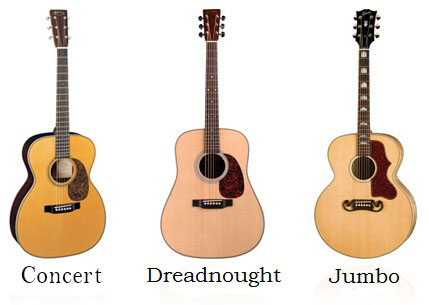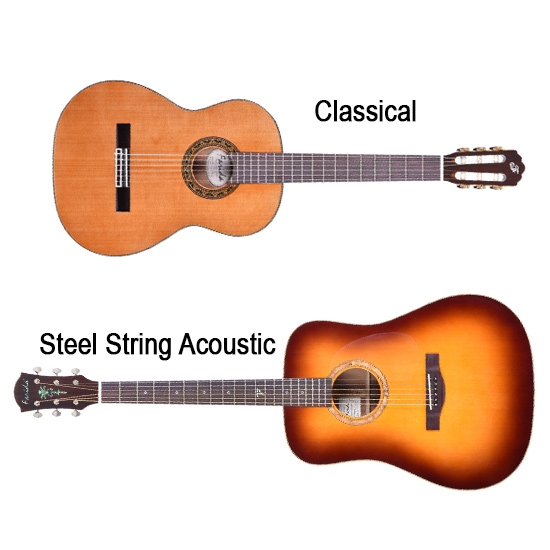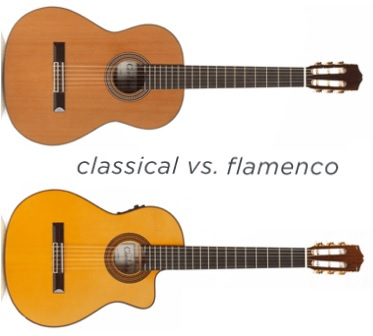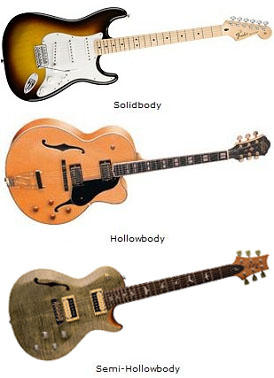What are the differences from Acoustic, Classic and Acoustic-Electric and Electric Guitars?
There are various differences between each guitar, from their bodies, wood, structure, thickness of the body and sound holes. What many confuse over is the difference between an acoustic and a classic guitar.
Acoustic Guitars come in 4 body shapes; dreadnought, jumbo, orchestra and concert. All acoustic guitars come with steel strings that are either 6 or 12 strings. The body is shallow and the sound opening is deeper in order to deliver better reverberation, this makes it lighter.


Classic Guitar consists of 6 nylon strings and would generally have one standard body shape, as for the wood that is used would normally be Indian rosewood that is used on the back and sides, this creates a warm sound once played, and as for the top body it would either be Cedar or Spruce that is used. Where as the fretboard can be found with rosewood or ebony wood
Flamenco guitars are somewhat similar to a classical guitar with the body shape and strings, yet they use a different wood that would usually be a solid European Spruce.

Semi-Acoustic or Acoustic-Electric has the same body shapes and number of strings as an acoustic guitar would, with the biggest difference being the fact that it has an equalizer, and a 1/4 inch input which can be plugged into a PA System (Professional Audio System). They directly amplify the sound with fewer problems which would usually come from using an exterior microphone for regular acoustic guitars
Electric Guitars have 3 different body types; solid body, hollow body and semi hollow, each type of body is used for different genres in music. You will usually find electric guitars come with different number of strings that would usually consist of 6, 7 or 8 strings, each one giving a certain type of tone.






